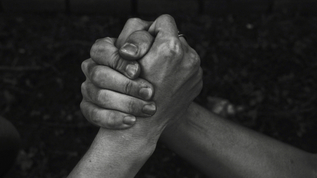Giving in the New Year: a Novel Approach to Sharing Power

Editor’s Note: This blog post originally appeared here from the National Committee for Responsive Philanthropy.
More and more grantmakers are seeking to integrate “diversity, equity and inclusion” into their programs and operations. This is a positive step, but I’ve sensed a disconnect between these efforts and the realities of racism, wealth inequality and other urgent issues. Power is the missing link.
Power is the force that changes systems whether through organized people or organized money. It is the only way to achieve equitable outcomes for all communities. Unless we acknowledge and confront the role of power in perpetuating disparities, we won’t make progress in health, housing, education, criminal justice and every other major societal issue.
We can help challenge power imbalances to reshape policies by funding organizations that build power and leadership in affected communities. We can share our own power and privilege as well to fully maximize impact.
What does it mean for a philanthropist to share power? I have contemplated this question in my role at National Committee for Responsive Philanthropy (NCRP) and as a donor. Here are four steps to consider:
Share your leadership: Recognize when to be a leader and when to support others to lead. If you are invited to be on nonprofit boards, speak publicly for causes and otherwise exercise community leadership, ask yourself whether this the best way to use your status to advance equity. Be mindful of race, class or gender privilege, or other identities that enable you to move easily in the dominant culture. Is your voice important to influence other dominant culture audiences, or is it more appropriate and impactful for people with lived experience of inequity to speak? What other ways can you leverage your privilege instead?
Recently, a nonprofit reached out to me about joining their board, and my first questions were, “How diverse are the trustees? Whose perspectives are missing? Is this the best way for me to serve your organization?”
Share your access: Help advance justice in your community by sharing access to connections, relationships and knowledge about the philanthropic sector.
When NCRP surveyed 1,800 organizations for our series of Philamplify foundation assessments, one of the things they most wanted from their funders was a connection to other grantmakers. Yet funders rarely provide this. The world of individual donors is even more mysterious than the foundation world. You can help groups navigate these realms and open doors to other resources. Access to 501(c)(4) funding is increasingly important, as more organizations see the imperative to fight for equity in political arenas.
Share your name: Whatever your giving vehicle, consider ways to be more accessible and transparent.
Many donors are reluctant to publicize their giving, fearing an onslaught of funding requests. Being an anonymous donor, funding through a donor-advised fund (DAF) or low-profile family foundation can buffer you from this. Yet it cuts you off from potential grant partners aligned with your giving goals, and it keeps you from leading by example.
Hoarding information is hoarding power, and it disadvantages grassroots organizations led by people of color, as we found in our study of the Oregon Community Foundation. Transparency is essential for sharing and shifting power to under-resourced communities. If you give through a DAF, consider how transparent the DAF-holding institution is. How aligned is that institution with equity values? Can you influence that institution to be more open and to adopt equity and power sharing goals? How can publicly sharing your story help catalyze other donors to act openly and boldly?
Share your decision-making authority: Consider the ultimate way to share power: Include affected communities in grant decisions, or even turn over funding to community-led institutions to be regranted.
I am on the grants committee of my local women’s fund, which is a diverse group of inspiring women leaders from urban and rural communities across four counties. We use a consensus process, and I have learned a tremendous amount about issues in other parts of my region. I also donate to funding organizations that share leadership with people who have lived experience fighting oppression, such as the Criminal Justice Initiative and Movement Voter Project.
How can you make your giving more inclusive? What other ways can community perspectives inform your grant choices?
Sharing leadership, access, identity and decision-making all require donors to think differently about risk. Some of these suggested power-sharing approaches may feel risky, but the sense of risk for a wealthy person with race, class or gender privilege who fits comfortably in the dominant culture is very different than the existential risks that people of color and other marginalized groups face every day.
What New Year’s resolutions can you make to begin a new approach to sharing power? NCRP’s Power Moves guide can help you take next steps.
